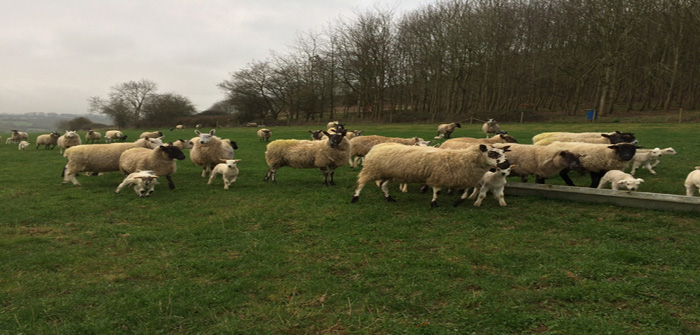Elanco Animal Health said that Nematodirus battus is a real cause for concern in the UK. Changing climatic conditions have meant that disease caused by this parasite has been a real challenge for sheep over the last few years, so it’s essential to be aware of the threat and know how best to manage it. Make sure your knowledge is up to date by testing yourself with the following questions.
What is the significance of the life cycle of Nematodirus?
Eggs are laid in the spring. They develop slowly to the third larval stage inside the egg, after which they can survive on pasture for up to two years. Hatching takes place after a prolonged cool period (over winter), followed by an average daily temperature of 10ºC or more.
If weather conditions are right, the majority of larvae will hatch at the same time (‘mass hatch’), which means that lambs are faced with a short, sharp burst of damage to their intestines, causing acute disease. If hatching is over a longer period of time, disease will not be so evident, but growth rates can suffer greatly. If the hatch is early, before lambs are grazing much, there is a reduced risk of disease. But if a mass hatch occurs when naive lambs of any age are grazing, there is a high risk of acute disease. This is why paying attention to the SCOPS forecast is important.
How has the pattern of Nematodirus disease changed in recent years?
Due to changing climatic conditions, disease in autumn is becoming more common in some areas.This occurs when eggs on pasture develop to the third larval stage and hatch in the autumn, with a ‘mass hatch’ potentially occurring in the warm, wet period following a dry summer.
How would a clinical problem with Nematodirus be identified?
Disease is caused by larval stages causing damage to the small intestine. This damage prevents the gut mucosa from exchanging fluids and nutrients properly, leading to diarrhoea, inappetance, dehydration and thirst. Because of the mass hatch, there will be a sudden onset of profuse diarrhoea with associated dehydration, and often death. As ewes are unaffected they are often seen to be still grazing whilst the thirsty lambs are crowded around drinking places.
Veterinary diagnosis is based on examination of faecal samples and post-mortem examinations as the clinical signs are the same as acute coccidiosis, which often occurs at the same time of year. Sometimes, both diseases can be present at the same time.
How should the Nematodirus risk be managed?
In the case of an outbreak, anthelmintic treatment of all lambs alongside supportive therapy to manage dehydration will be advised. Affected animals may need to be housed for a short period.
Use of ‘low risk’ pasture would be ideal to help prevent disease, but this requires land that has not been grazed by lambs the previous spring and summer, so is often impractical. To manage lambs on contaminated pasture, anthelmintic treatment is necessary.
White drenches have high activity against Nematodirus battus and there have been very few confirmed cases of resistance to white drenches in this parasite in the UK. Products containing cobalt and selenium alongside a benzimidazole wormer are often recommended to support lamb growth at this critical time. Rycoben® SC contains the highest levels of these minerals, alongside ricobendazole.
Treatment should initially be administered following SCOPS Nematodirus risk forecast, and repeated as necessary over the risk period. As severe gut damage can occur, causing long term effects on growth rates, it is unwise to wait for clinical signs of diarrhoea to occur before treating.
The risk period is usually around May to June, but is becoming increasingly variable, so the SCOPS forecast should be used to determine the level of risk. This system uses live weather station data to predict the level of challenge and time of hatching for each of the weather stations in the system (giving a more accurate local forecast) and is updated daily. However, prolonged hatching periods, and heavy challenges may still mean that repeated treatments are necessary.


